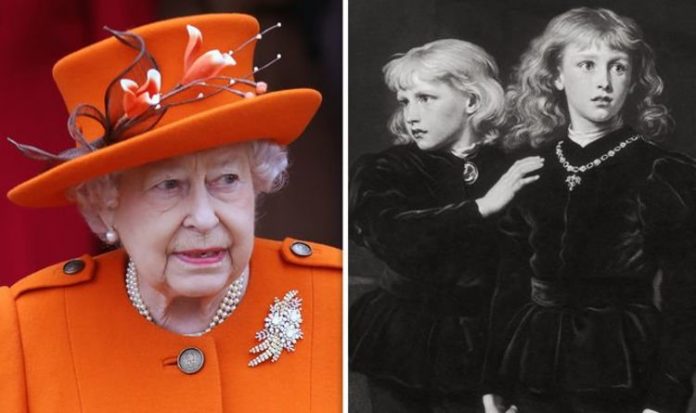The Princes in the Tower is the nickname given to 12-year-old Edward V and his nine-year-old brother, Richard of York. Upon the death of their father, Edward IV, the two were placed in the Tower of London for their own protection while preparations were being made to crown the late monarch’s son. However, the two boys were soon announced as the products of a supposedly bigamous marriage, making their claim to the throne null and void — so their uncle Richard III took the throne instead.
The two boys were not seen again in public after that.
Reports began to emerge that their uncle had them murdered so he could claim the throne, an allegation only enhanced by Shakespeare’s famous Richard III play written in 1633.
According to Tudor and Stuart histories, the boys’ remains are in an urn designed by Sir Christopher Wren.
History suggests they were “stifled with pillows…by the order of their perfidious uncle Richard the Usurper” — although a growing body of modern day critics dismiss this as blatant Tudor propaganda to undermine Henry VII’s predecessor.

Queen Elizabeth II and a 1878 portrait of the Princes in the Tower (Image: Getty)

Edward V and Richard of York were thought to have been murdered on Richard III’s orders (Image: Getty)
In 2012, the Richard III Society discovered Richard III’s remains in a Leicester car park and, through forensics, identified his skeleton — and so they were hoping to extend this to the remains of his supposed victims, the Princes in the Tower.
However, the following year, previously confidential correspondence showed that the Church of England — backed up by the Queen and Government ministers — had refused requests to carry out forensic examinations on the alleged Princes.
The bones would have been submitted to carbon dating to see if the bodies had died during Richard III’s reign as well as using DNA testing to prove their identities.
The BBC had put in a request for the same investigation into the remains back in 1993, as had Channel 4 in 1995.
READ MORE: Prince Albert’s devastating confession about death to Queen Victoria

Richard III was their uncle and defeated by Henry VII in 1485 (Image: Getty)
A Home Office document reveals the then Dean of Westminster, the Very Rev Michael Mayne, resisted both of these requests although he admitted he was “pressed very hard to agree”.
Reportedly, Buckingham Palace and the then Home Secretary Michael Howard were consulted, and both he and the Queen were in “full agreement” with the church that no such investigation should be allowed to take place.
They reasoned that several historians claimed carbon dating a sample from the late 15th Century would only be able to show the time of death within plus or minus 50 years — and Richard III occupied the throne for just two years between 1483 and 1485, before being defeated by Henry VII.
The Dean explained: “It could not therefore differentiate between Richard III or Henry VII — or another — being the guilty party.
DON’T MISS
How King Henry VIII ‘called for head of Meghan Markle’s ancestor’ [INSIGHT]
How Queen was ‘ready to face any risks’ in role as Commonwealth head [EXPLAINED]
Why TWO of Prince Philip’s aunts were canonised into saints [EXPOSED]

Richard III’s remains were found in Leicester in 2012 (Image: Getty)

The Queen and Westminster Abbey refused to allow the same forensic investigation into the princes as that which identified Richard (Image: Getty)
“Nor would the C/14 technique give any clue as to the age of the death of the children.”
While techniques had advanced by the time of the 1995 request, the Dean still rejected any such suggestion.
He said: “A sample of bone (skin/hair/tissue) from a known individual related to the princes would be required, and that almost certainly means opening a second tomb in the Abbey or elsewhere.
“If the result is positive, the remains of the two princes are placed back in Sir Christopher Wren’s urn.

The Princes’ death remains a historic mystery (Image: Getty)
“But what if they are negative: what do we do with the remains?
“Keep them in the urn in the royal chapels, knowing they are bogus, or re-bury them elsewhere?
“And what would we have gained, other than to satisfy our curiosity in one area. It would not bring us any nearer the truth of the affair.”
He insisted that the accuracy would have to come down to months or weeks of the time of death “if Richard III is to be let off the hook”.
The Dean added that investigating the bodies could also set a precedent for other requests, as there were other bodies in Westminster Abbey with an uncertain identity.







